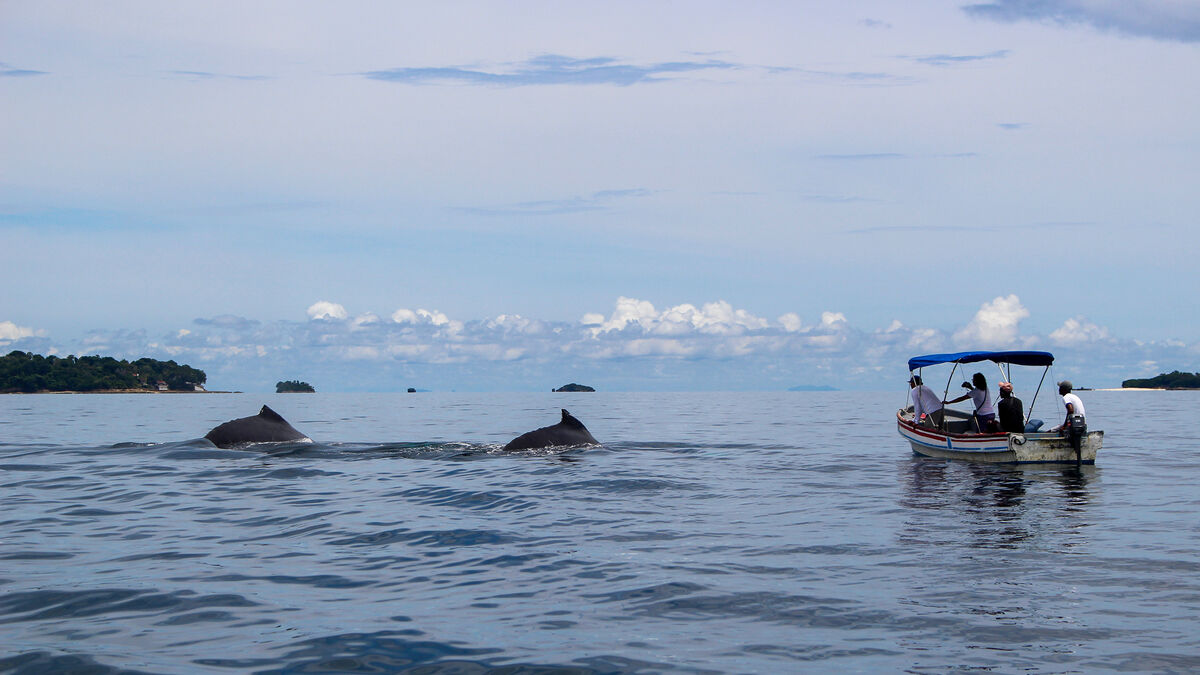Whales and dolphins suffer from poor sighting practices in Panama
A series of scientific studies conducted in Panama shed new light on the negative effects of noise, harassment, and other ill-advised practices during whale and dolphin sightings. Two recent scientific studies carried out in Panamanian waters show that incorrect sighting practices generate consequences in the behavior, communication systems, and emotional states of the animals.
One of the investigations was carried out within the protected area of the Las Perlas Archipelago, where they monitored humpback whales during their breeding season (from August to September) and they recorded that tourist observation boats often ignored the regulations. established to protect whales: " They deliberately chased them, got too close to adult whales and their young, forcing them to change their behavior, " details a study report led by the Smithsonian Tropical Research Institute (STRI) and the State University of Arizona, Whales changed direction more frequently when more than two or three tourist boats were present, and groups of whales that included a calf took another direction more frequently than other types of groups, based on recorded observations.
“ In Las Perlas, where the whales come to breed, we observe harassing behaviors, such as 10 tour boats surrounding a mother and her calf, but we also speak with tourists and operators who have learned a lot about whales and defend the best practices of whale watching and conservation efforts. For my thesis, I plan to find out more about what motivates both tourists and operators, so that we can suggest ways to improve their experience and protect the whales, ”says Katie Surrey, a doctoral candidate from Arizona State University and co-author of the study.
"Now we have methods to measure how the behavior of whales changes as a result of observing practices, " says marine biologist Héctor Guzmán, another author of the research.
The scientists hope to measure the amount of cortisol (a stress hormone) to confirm whether animals are under stress, as well as employing better technology to measure the distance between ships and whales and drones to document interactions.
Whale watching is increasing around the world and, according to the International Whaling Commission, the activity generates about $2.5 billion a year.
 Dolphins
Dolphins
Dolphins, in Panamanian waters, are also suffering the effects of sighting tours, according to other research, this time by Betzi Pérez-Ortega, a Panamanian doctoral student at McGill University, Canada.
Pérez-Ortega carried out his work in the Dolphin Bay area, Bocas del Toro archipelago, in the Caribbean, focused on bottlenose dolphins and recorded multiple irregularities.
A STRI report shares the details: " A large number of tour boats follow the dolphins for long periods, disrupting feeding and social behaviors and sometimes injuring the animals. Mothers and their young can be separated. In these circumstances, dolphins are likely to become stressed and more alert. These emotional states can be detected by modulating the contour of their characteristic whistle. "
Dolphins produce echolocation "clicks" to navigate and locate food, while their sounds or whistles are to socialize, strengthen group cohesion and communication between mother and calf pairs and “with this study we have been able to scientifically verify how the noise from tourist boats affects the communication system of the species in this particular place, "says the STRI fellow.
In Panama, there are regulations for the observation of whales and dolphins since 2005.
